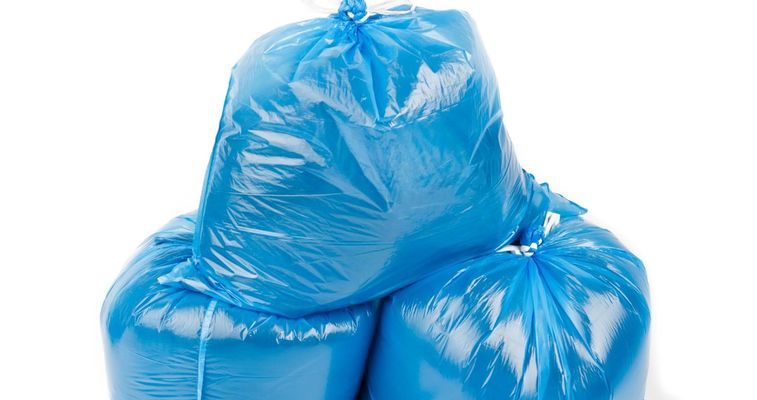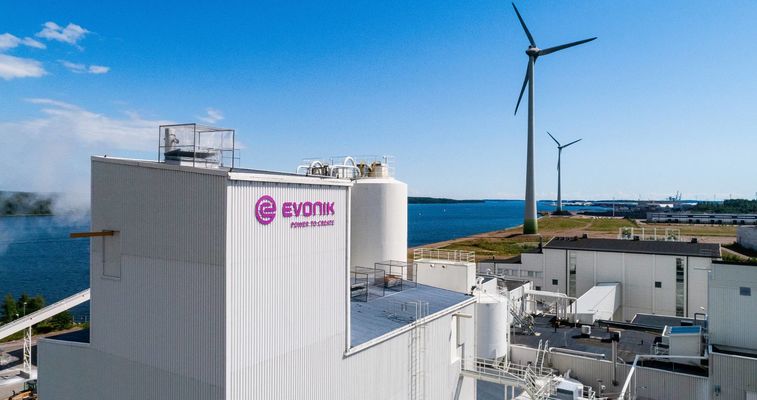
Evonik Carbon Footprint
Since 2008 we are publishing the “Evonik Carbon Footprint” (ECF). The ECF is a comprehensive greenhouse gas emissions balance along the value chain, from the extraction of raw materials through production to the disposal of products (excluding the use phase).
Evonik takes climate and environmental protection extremely seriously as a key element of its corporate responsibility. The company has therefore been compiling data not only on direct greenhouse gas emissions but also on indirect greenhouse gas emissions for selected relevant categories since 2008. Allocating emissions to their various sources along the value chain is of particular importance. Analyzing the full range of emissions, from the company’s own production facilities, through various categories such as purchased energy and raw materials, transports, business travel, and production waste, to the ultimate disposal of products sold, creates a comprehensive greenhouse gas balance for the company. The balance covers only the greenhouse gas emissions of Evonik’s continued operations.
Evonik’s greenhouse gas emissions along the value chain amounted to 23.2 million tons of carbon dioxide equivalents (CO2eq) in 2019. The highest proportion of emissions is attributable to the purchase of chemical raw materials and packaging materials as well as indirect goods, followed by emissions resulting from product disposal in Scope 3 and direct emissions in Scope 1.
GREENHOUSE GAS EMISSIONS ALONG THE VALUE CHAIN OF EVONIK INDUSTRIES (EXCLUDING THE USE PHASE) IN 2019
|
Scope |
Category |
Mio. mt CO2eq |
|
Scope 1 |
Energy and process emissions of Evonik |
4.9 |
|
Scope 2 |
Purchased energy (net, balance of purchased electricity and steam less sales of electricity and steam to third parties; market-based approach) |
0.6 |
|
Scope 3 |
Category 1: Purchased chemical raw materials and packaging materials as well as indirect goods |
9.5 |
|
|
Category 2: Capital goods |
0.4 |
|
|
Category 3: Energy-related activities (outside of Scope 1 & 2) |
0.6 |
|
|
Category 4: Inbound transports of chemical raw materials |
0.3 |
|
|
Category 5: Disposal and recycling of production waste |
0.5 |
|
|
Category 6: Employee business travel |
0.03 |
|
|
Category 7: Employee commuting |
0.1 |
|
|
Category 8: Leased assets, upstream (company vehicles, electricity and heating of administrative buildings) |
0.03 |
|
|
Category 9: Outbound product transports |
0.3 |
|
|
Category 12: Disposal and recycling of sold products |
5.9 |
|
Total |
|
23.2 |
DECISIVE CATEGORIES

SCOPE 3 – CATEGORY 1: 9.5 MIO. T CO2EQ
This category depicts emissions from extraction, production and transports (except for the transports to Evonik reported in Category 4) of chemical raw materials and packaging materials, as well as indirect goods.

SCOPE 3 – CATEGORY 12: 5.9 MIO. T CO2EQ
Calculating CO2eq emissions resulting from the
disposal and recycling of Evonik products occurs by means of product quantities sold and emission factors corresponding to the disposal method of the respective product. Here, not the end products themselves, but only the Evonik products contained therein are considered.

SCOPE 1 AND 2: 5.5 MIO. T CO2EQ
Scope 1 covers direct energy- and process-related emissions of Evonik, while indirect emissions from purchased electricity and thermal energy for company use are combined in Scope 2.
Details on the methodology and calculations behind the different categories are described in our latest brochure.
FURTHER INFORMATION
The Carbon Disclosure Project (CDP) is a globally active non-profit organization that uses standardized questionnaires to collect data on greenhouse gas emissions, climate risks as well as companies’ reduction targets and strategies every year as part of its “CDP Climate Change” program. The information is provided on a voluntary basis. Evonik was awarded a grade of “B” in the 2019 CDP Climate Change reporting cycle and thus remains at the same level as in the previous year. By comparison, both the global average and the average of European companies participating in the CDP Climate Change in 2019 are in the lower “C” range.
Evonik accepts responsibility for its businesses, its employees, the environment and the society. For Evonik, responsible action and economic success belong inseparably together. Find out more in our current Sustainability Report.
